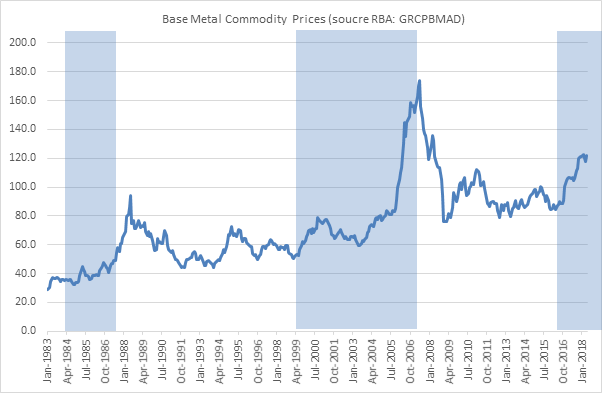By Dr Andreas Chai, Director, Economic Policy & Analysis Program, Griffith Business School
 1999 was a great year to be alive in Australia. Apart from Prince hitting the airwaves again, Powderfinger were still playing and topped the Hottest 100, the first Matrix movie was released, and you could still get a flat white for under three dollars. In terms of the Federal Budget, 1999 marked the start of a remarkable period in which the Federal Budget accumulated approximately $90 billion dollars between 1999-2008.
1999 was a great year to be alive in Australia. Apart from Prince hitting the airwaves again, Powderfinger were still playing and topped the Hottest 100, the first Matrix movie was released, and you could still get a flat white for under three dollars. In terms of the Federal Budget, 1999 marked the start of a remarkable period in which the Federal Budget accumulated approximately $90 billion dollars between 1999-2008.
2018 is starting to look a lot like 1999, at least in terms of international commodity prices. While global growth remains sluggish and domestic business investment is stuck in a low gear, the underlying cash balance of the Federal Government is projected to reach surplus in the coming quarters thanks to the strong performance in commodity prices, such as an iron ore.
Rising iron ore prices drive up earnings in the resource sector and therefore tax revenues. The chart below highlights the link between commodity prices and the Federal Budget. The shaded areas highlight phases in which there were significant returns to surplus in 1985-1987, 1999-2007 and 2016 to present.
 These phases of fiscal recovery coincided with a significant upward jump in the commodity prices. The only period where the fiscal position improved in the absence of rising commodity prices was immediately after the 1992 recession.
These phases of fiscal recovery coincided with a significant upward jump in the commodity prices. The only period where the fiscal position improved in the absence of rising commodity prices was immediately after the 1992 recession.
While a recovering fiscal position is warmly welcomed by politicians, especially with a federal election just around the corner, it is worth reflecting on the fact that many of these new spending opportunities are caused not by sound economic management, but are rather due to global market forces that are extremely volatile in nature and hard to predict.
It is much too tempting for governments to view these upward movements as permanent. Any new spending initiatives are thus likely to be built on shaky foundations. New spending initiatives should be tagged with the big asterisks flagging “funding initiatives will only last as long as global commodity prices keep surging”.
A much deeper issue is how the Australian economy can evolve to grow in a more balanced manner and reduce its exposure to falling commodity prices. This fundamental question has bedevilled Australian politicians for centuries since the gold rushes in the 1800s. Having recently emerged from a commodity supercycle between 2004 and 2013 (see figure above), its funny how some of the lessons from the last commodity boom have already been forgotten. In 2013, there was much agreement that Australia had squandered the mining boom mainly due to having spent the windfalls during the boom, raising inflation and debt levels.
“…many of these new spending opportunities are caused not by sound economic management, but are rather due to global market forces.”
A more strategic approach would consist of getting a national response to rising commodity prices right by setting up Sovereign Wealth Funds that can translate short-term gains into long-term investments in health (NDIS), education and infrastructure that will help hedge Australia’s economy against future downturns in commodity prices. A good start was made in this direction as some of the mining boom surplus from the last super cycle was put towards the education investment funds.
However, we are still far behind other countries such as Norway, Singapore and the UAE in terms of developing a sophisticated long-term strategy to leverage future surges in commodity prices (and improvement in the Terms of Trade) to diversify the economy and support long run productivity growth. While the long run return to surplus is good news, it’s time we take heed of the lessons from the recent past.
